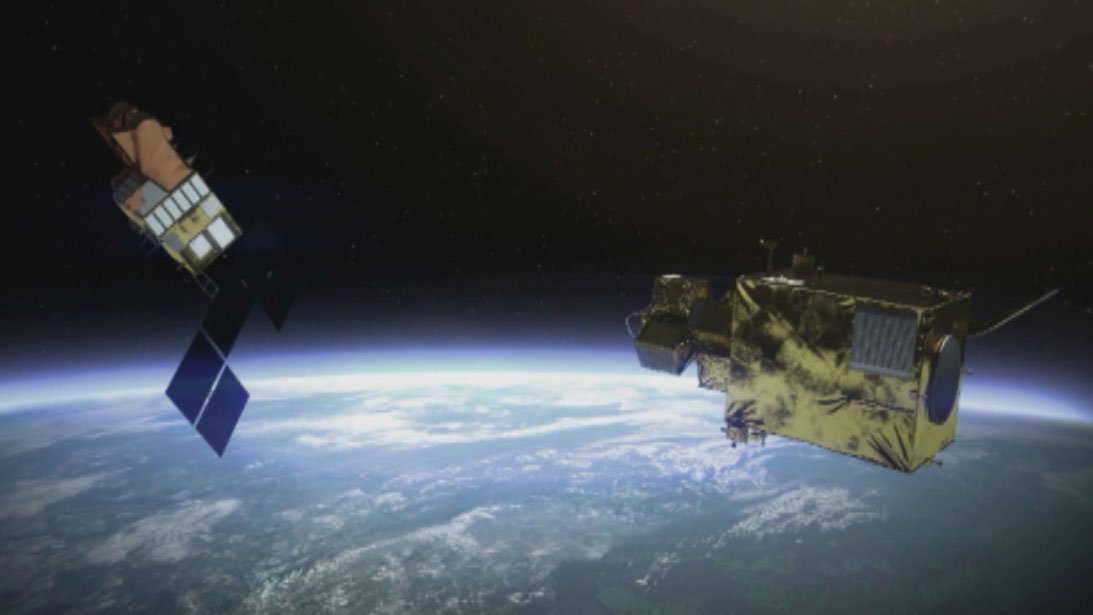A junk harpoon on a mission to clean up space
British engineers are developing a harpoon to clear up space junk, including defunct satellites and used rocket boosters threatening other satellites and astronauts on the International Space Station.

Having considered several different methods for grabbing and returning bits of orbital debris to Earth, engineers have settled on a solution right out of the pages of Moby-Dick.
Since the start of the space race, around 4,900 rocket launches have left more than 23,000 pieces of space junk in orbit. They include upper stages of rocket boosters, broken-down weather and communication satellites, and tools dropped by NASA astronauts on space-walks.
But with typical speeds of 25,000 kilometres an hour for most pieces of space debris, even small objects the size of nuts and bolts represent a major hazard to other satellites or even manned space missions.
Simplicity
“The harpoon has a great advantage in that it’s simple,” said Jaime Reed of Astrium UK, which is developing the technology.”If we keep it simple and low cost we can capture lots of space junk in a single mission.”
Until recently the threat from space junk was seen as largely theoretical. But in 2009, a disabled Russian weather satellite collided with an American telecommunications satellite worth tens of millions of pounds.
What is more, the collision itself created around 6,000 new pieces of debris.
“The 2009 collision really raised awareness in the community,” said Mr Reed, pointing out that orbital space is a finite resource: “all that junk up there could damage operational satellites, so people are now beginning to think about cleaning up the environment to ensure future generations can use it for the everyday services that we rely on.”
Damage limitation
Now every international space agency including NASA and ESA have programmes to prevent and ultimately contain space debris. Sensing a future demand, companies like Astrium are trying to develop space-based waste disposal technologies.
Astrium’s plans include a “chase” satellite which would be fitted with five or more harpoons.
Laser and radar guidance systems would be used to identify a piece of space junk before it is captured with a gas-propelled harpoon on a tether.
Once secured to the space junk, a smaller sub-satellite would detach from the chase satellite and drag the junk away to burn up as it re-enters the Earth’s atmosphere.
The chase satellite would then find another target. It is hoped the system could remove around five pieces of space debris a year.
But harpoons are by no means the only idea out there. Germany’s space agency, DLR are experimenting with a projectile net that can envelope a piece of space junk before de-orbiting it. Another idea is for an orbital litter-picker that grabs debris with a robot arm before dragging it all back to Earth.
Next week space scientists and engineers are meeting in Germany for an international conference on space junk. A well as looking at new ways to clean up space, they will also discuss new rules for keeping it clean including requirements for satellites to be designed to “de-orbit” themselves when their operational life comes to an end.
Topics
, Nasa-
Latest news
-
Year of civil war in Sudan ‘a nightmare of hunger and displacement’4m

-
Israel fears repeat Iran attack, says former editor of Jerusalem Post4m

-
How long could it take to clear the Rwanda asylum seeker backlog?3m

-
Rwanda asylum boost for Sunak as bill expected to become law2m

-
Donald Trump trial: day one of historic Stormy Daniels court case4m

-




